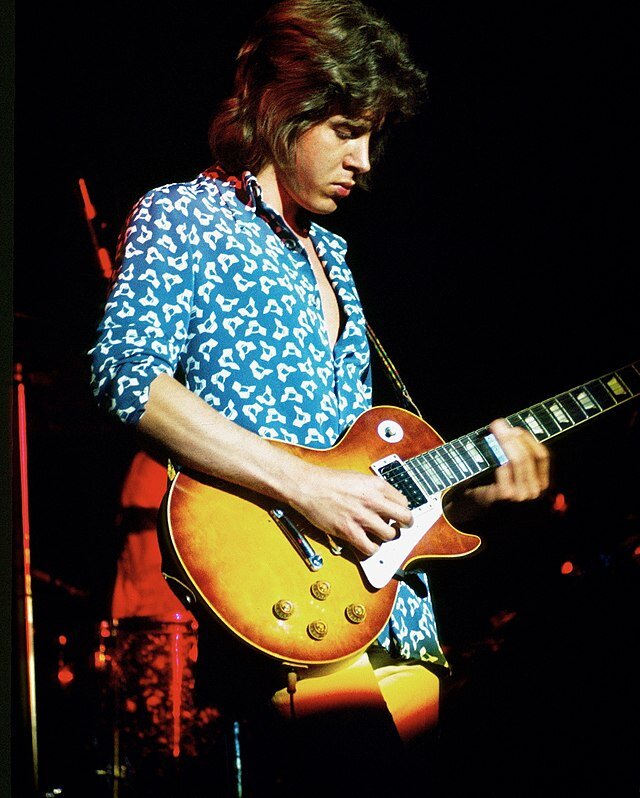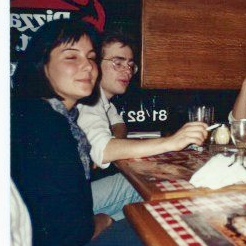Belinda was mine, until the time that I found her - holding Jim. Loving him.
And Sue came along, loved me strong, that’s what I thought.
Me and Sue. But that died too.
In the 1990’s I wrote a novel called ‘Neil Diamond’s Beard’. I employed this slightly off kilter title to try and grab the attention of the Henry and Henrietta’s who work as the gatekeepers of publishing companies. Of course, if I had been serious about success I should have called it – ‘My Dad was Head of Publishing at Random House’ – but to me the Neil Diamond reference was more than quirky. It was personal. This ruse didn’t work, of course. The book remains a great, lost piece of literary history.
Back in the early 1990’s, you can’t imagine how unpopular Neil Diamond was. He struck fewer chords with the rock establishment than a benefit gig for child molesters. Being a Neil fan in those days was the definition of walking the hard yards. Cool kids would ignore you, girls would laugh at you; friends just shake their heads and wonder where it all went wrong.
But Neil was worth the withering condescension, the social ostracism. I suppose in a way my book title - referencing Neil - was a statement of defiance. Sometimes in life – as Huey Lewis sort of said – it’s more hip to be square. He was so out, I liked him, so fuck you and feel my inner strength. A bit like Abba. Now in the Smiths-Bunnymen-Jesus and Mary Chain world of the late 80’s university, this made my fellow students view me with suspicion; “See that guy? He just asked for Cracklin’ Rosie!” But, unlike St Peter, I never hid or denied my like of Neil or Abba. In these post Mama Mia and 12 Songs times, where a more balanced viewpoint is taken of both artists, I do feel somewhat vindicated.
But why did I call my first proper novel, Neil Diamond’s Beard? There are two reasons. Firstly, The Jazz Singer. Yes, it’s an update of a 20’s classic. Yes, it was Neil’s first and last film. Yes, Larry Olivier hams his way through it like a leg of pork in the window of a tapas bar off Las Ramblas. But, but, it does have some good songs in it (Love on the Rocks, obviously, but America’s pretty good too). Not only this, but there’s a scene where Neil’s rock star character goes off the rails, abandons his girlfriend and baby and lives like a bum in rural America, scratching a living as a singer/guitarist in small town bars. He wears the Stetson. He wears the boots. He wears the cool 70’s shades. And he grows a beard. So, what? Well, it could be argued that the beard was Neil’s character’s physical manifestation of inner turmoil, of being a man on the loose, a man being, well, a man.
This defiance (misogyny, stupidity, whatever) does have its attractive side, an appeal that makes cutting your nose off to spite your face seem heroic. So, I called my book, which dealt with male issues and was a nascent cri de coeur, Neil Diamond’s Beard. Yeah. Let’s hope the second reason is better, Tim.
Reason two, and the ostensible purpose of this article, is the song Solitary Man. This was Neil Diamond’s first hit in the US. For years he’d been a Tin Pan Alley songwriter, hustling songs around the Brill Building and not really getting anywhere. Finally though, in 1966, dressed in black, he was signed as an artist by Bang records. (Pedants note – he also wrote Daydream Believer for the Monkees at the same time. That can’t have hurt.)
Being born in 1968 - I know, I know I’m timeless - I didn’t hear Solitary Man until much, much later. Late 80’s in fact. By that time I already loved Sweet Caroline, Cracklin’ Rosie, Song Sung Blue – the obvious ones. But hearing a live version of Solitary Man for the first time on a compilation tape of his other hits was a revelation. I suppose it was the combination of minor chords in the verse breaking out into a major chord chorus that was appealing. Light and shade. Night and day. Contrast. Trombones. Whatever.
The song structure is quite a complex one and, certainly for a guy who was nicknamed Eadae by his band (loads of Neil songs at one point – like Cherry Cherry - use the E-A-D-A-E chord structure), it was a surprising but welcome find. But more particularly, there’s the title itself and the worldview it represents: Solitary Man. Now that sounds interesting, I thought. The lyrics are relentlessly downbeat; all about a guy’s struggle to find and hold a relationship but beset on all sides by hordes of fickle women who are waiting just to dump him and get off with his mates. Along with perhaps I Am…I Said the verses in Solitary Man contain some of Neil’s most personal and introspective lyrics.
But then we get to the chorus… Here Neil says it’s all right; until he meets the right girl he’s still got himself. He can be who he is – a ‘solitary man’. Powerful stuff! We can all rally around the flag on that one. It could even be argued that Neil is singing about self-empowerment (You go, girl!), but I like to think that he’s groping towards the fully formed libertarianism of his later song The Boat That I Row:-
There ain’t men alive who can tell me what to say. I choose my own side and I like it that way.
Now the best version of Solitary Man – I think – is the live take from Neil Diamond Gold (Not Stages or the overrated Live at the Greek but the live album of early songs Uni put out as a spoiler when Bang released a Best of compilation just after Neil changed labels). This live version is even more moody than the recorded take; Neil and a female backing singer harmonise perfectly and replicate with vocals the studio record’s trombone part. The effect is – well – slightly Jewish to be honest, a good decade before he explored this more fully in The Jazz Singer film. Whatever Neil summoned up on stage that night in Hollywood is audio gold. Worth a listen.
Although it’s not the best-known Neil Diamond song, other artists have covered Solitary Man occasionally. B.J. Thomas (of Raindrops Keep Fallin’ On My Head fame) did an organ heavy cover in 1969 that is well worth a listen. Chris Isaacs’ version was MOR crap and best avoided. Norwegian Goth Metal band HIM did a spikey version with heavy guitars, which is interesting. It is said, perhaps maliciously, that my group Shambolic murdered the song back in the 90’s playing dive bars in Brighton. Not true; Solitary Man is robust enough to withstand this sort of attack. So; Solitary Man – Neil Diamond’s first hit, lots of trombones and those moody chords and lyrics. What’s not to like? Neil - you’re a legend!
BTW - good luck Neil fighting Parkinsons. It’s a fucker of a disease which destroys lives to a relentless and grim drumbeat. You fight Frogking.












































